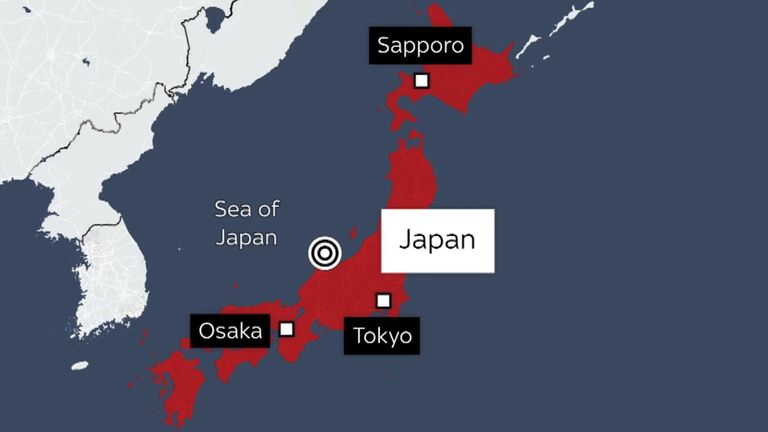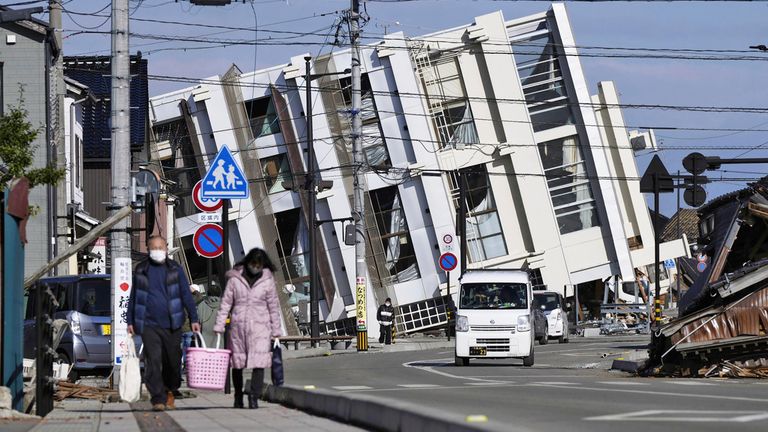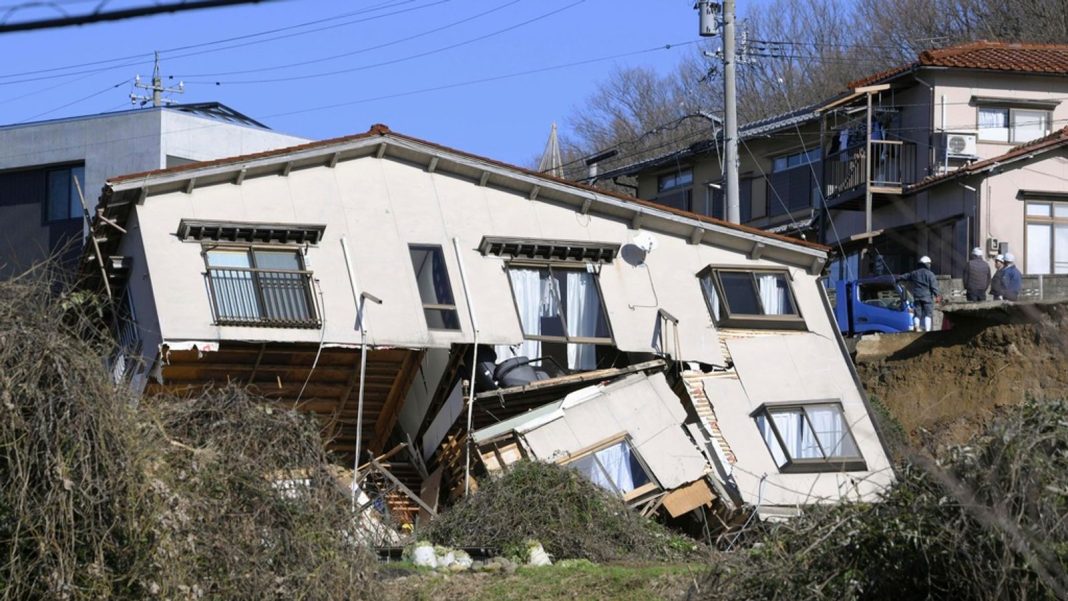In a small suburb just outside the city of Kanazawa the houses sit largely dark and still.
People have evacuated and have chosen not to come back yet.
Just round the corner you can see why they might have come to that decision.
Indeed on the edge of the development, a whole section of road has completely collapsed, houses levelled, crushed on top of the cars that once stood beside them.
Japan earthquake latest: Follow live
The authorities are warning of more tremors and quakes to come, there have been over 100 already in just over 24 hours and the neighbours understandably feel that they could be next.
An aerial view shows collapsed houses after the earthquake in Kanazawa

Pic: AP
The really frightening thing about this place is it’s still 150km from where the epicentre of the largest quake hit – it gives you a sense of just how strong and damaging it was.
Terrified resident hid under table
Yoichiro Hotta is a local resident and we met him as he came to gaze at the ruined houses of his neighbours
He tells us that when the quake hit he was terrified, his whole room shook, and he sheltered under a table.
“I thought I was going to die,” he says, looking sadly at the rubble beside us.
This content is provided by Datawrapper, which may be using cookies and other technologies.
To show you this content, we need your permission to use cookies.
You can use the buttons below to amend your preferences to enable Datawrapper cookies or to allow those cookies just once.
You can change your settings at any time via the Privacy Options.
Unfortunately we have been unable to verify if you have consented to Datawrapper cookies.
To view this content you can use the button below to allow Datawrapper cookies for this session only.
The challenge now for the authorities is accessing those communities stranded closer to where the quake hit.
There has been such extensive damage to roads and airports that reaching these places is hard, and the cold here is biting.
Prime Minister Fumio Kishida even said this morning that the obstacles mean rescue efforts might have to be launched by sea.
Indeed, as we drive north one of the key highways that links up to the worst affected Noto Peninsular remains shut, we were able to walk along an empty three lane motorway.

Being prepared was not enough
Japan is remarkably well-prepared for these sorts of events, the infrastructure and warning systems are robust, it’s part of the reason the death tolls here are rarely as high as in other places.
Read more world news:
Five crew of small plane killed after jet crash
South Korean opposition leader stabbed in neck
But some of the aerial images taken around the epicentre attest to how even that was not enough this time.

Wajima, Ishikawa. Pic: AP
Whole streets in the northern cities of Wajima and Suzu are flattened, power lines are down and thousands of homes are without power.
The worst of the panic might be over for now as the vast tsunami warnings were downgraded and then removed, but many tens of thousands were urged to evacuate and many have not yet returned home.
On our journey towards the quake site along Japan’s western coast, many of the traditional fishing villages we passed stood eerily silent.
Please use Chrome browser for a more accessible video player

1:58
Scale of Japan quake damage becomes clearer
One 90-year-old man who’s lived here his whole life told us he has never once had to evacuate from his home before, quakes and tsunamis are much more common along Japan’s eastern coast.
The death toll will very likely climb as more people are reached.
This country is not unused to earthquakes and the tsunamis they bring, but there’s a sense the scale of this one has shaken even them.







